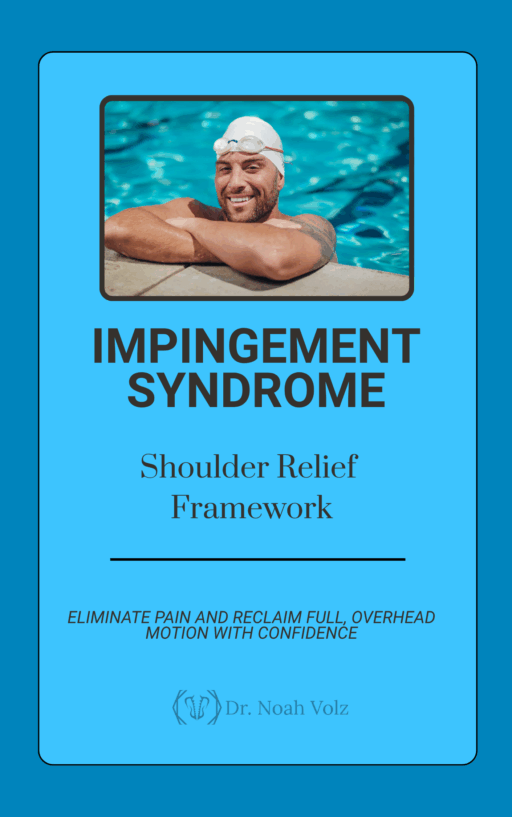When Liz came into my chiropractic office in Ashland, she didn’t describe her back pain like most patients do.
“It’s not sharp,” she said. “It’s more like my body is guarding something. Like it’s trying to protect me… but I don’t know from what.”
She was right.
Her MRI didn’t show a disc herniation. Her reflexes were intact. She had no red flags. But when she bent forward, her whole system locked up. Her breath shortened. Her back braced.
It wasn’t a mechanical block.
It was protective overdrive.
Because in chronic pain, the problem isn’t always the tissue—it’s the nervous system acting like there’s a threat, even when there isn’t one anymore.
Let’s unpack what that actually means—because understanding this shift is the key to recovery.
Pain Is a Protective Mechanism—Not a Damage Detector
Contrary to popular belief, pain is not a direct readout of tissue damage.
Instead, it’s the brain’s decision based on all available input: biological, emotional, and environmental. When the brain interprets a situation as threatening, it produces pain to encourage protective behavior.
Here’s what’s involved:
-
Nociceptors in tissues detect mechanical, thermal, or chemical changes (but they don’t “feel” pain—only send signals)
-
These signals travel to the spinal cord, where they are modulated (amplified or inhibited) before reaching the brain
-
The brain evaluates the context—including past experiences, beliefs, emotional state, and visual cues—to decide whether to create pain¹
It’s not that the pain is “in your head”—it’s that pain is a protective output, not an input.
And in chronic pain, that protection gets stuck in the “on” position.
What Happens When the Protection System Won’t Turn Off?
Your pain system is like a smoke alarm.
In acute injury, it alerts you to danger—just like it should. But over time, repeated signals can cause the entire system to become sensitized:
-
Peripheral sensitization: Nociceptors lower their threshold, meaning they fire with less stimulation
-
Central sensitization: The spinal cord and brain become hyperreactive, amplifying normal signals as if they’re dangerous²
-
Glial cells in the spinal cord release pro-inflammatory chemicals, further increasing sensitivity
-
The brain’s “pain neuromatrix” expands, meaning more brain regions light up in response to minor stimuli³
The result?
-
You feel pain during non-painful activities (like bending, walking, or sitting)
-
You become sensitive to stress, temperature, or even bright lights
-
You lose trust in your body, leading to movement avoidance and further deconditioning
And just like a smoke alarm near the kitchen, your system starts going off at every little whiff of “danger”—even when there’s no fire.
Anatomy of the Pain Protection System
Let’s take a deeper look at the structures involved in this overprotection:
-
The dorsal horn of the spinal cord acts as a gatekeeper. Repeated nociceptive input increases excitability of second-order neurons. These neurons respond more vigorously to incoming signals, and may even fire spontaneously.
-
The periaqueductal gray (PAG) in the midbrain is a key part of the descending inhibitory system. When under-functioning—due to stress or trauma—it loses its ability to “turn down the volume” on incoming pain.
-
The anterior cingulate cortex (ACC) and insula become more involved in pain processing, especially emotional and evaluative aspects of pain⁴
-
The amygdala, the brain’s fear center, lights up more in people with chronic pain—especially when pain is associated with fear of movement (kinesiophobia)
So the experience of pain is no longer just about the back. It’s about a whole-body system caught in a feedback loop of protection.
How We Help Turn Down the Alarm in Chronic Pain
The good news? The protection system can be retrained.
When Liz came in, she didn’t need fixing—she needed reassurance, recalibration, and reactivation.
Here’s what that looked like:
-
Spinal adjustments helped restore joint mobility and feed her brain proprioceptive input—calming the dorsal horn and interrupting protective bracing
-
We taught her to move in graded, non-threatening ways, so her brain could update its interpretation of movement as safe
-
She learned to breathe diaphragmatically, improving vagal tone and activating the parasympathetic nervous system
-
We layered in pain neuroscience education so she could understand her pain, not fear it
-
We exposed her to previously painful movements—like bending forward—using mirror therapy and light resistance, gradually changing the narrative her brain had around movement
In just six weeks, Liz could bend over, walk briskly, and even garden again—all without pain.
Not because we “corrected” her spine.
But because her nervous system learned to stop overprotecting.
Pain Isn’t the Enemy—It’s a Miscommunication
If you’ve been living with pain that doesn’t make sense…
If your scans look normal, but your back still flares up…
If you’ve been told to strengthen, stretch, or rest—but nothing works long-term…
It’s not that you’re weak.
It’s that your pain system needs a new script.
Here at our Ashland chiropractic clinic, we help people like Liz recover—not by chasing pain, but by restoring trust between the body and brain.
Because once your nervous system learns it’s safe again…
The protection fades.
The pain fades.
And life expands.
References
-
Moseley GL, Butler DS. Explain Pain. Noigroup Publications, 2017.
-
Woolf CJ. Central sensitization: implications for the diagnosis and treatment of pain. Pain. 2011;152(3 Suppl):S2–15.
-
Apkarian AV, et al. Chronic back pain is associated with decreased prefrontal and thalamic gray matter density. J Neurosci. 2004;24(46):10410–10415.
-
Melzack R. Pain and the neuromatrix in the brain. J Dent Educ. 2001;65(12):1378–1382.
-
Pain in the Frame Course – CDI (2024). “Case Three – Low Back Pain.”
Want to know what kind of back pain you have?
-

Bicep Tendon Pain Solution
$50.00 -

Brain Detoxification & Recovery System
$50.00 -

Brain Energy and Endurance Support System
$50.00 -

Brain-Based Movement and Motor Control Training
$50.00 -

Centralized Low Back Pain
$50.00 -

Cervical Radiculopathy: Neck and Nerve Relief Pathway
$50.00 -

Complex Low Back Pain
$50.00 -

Complex Radiating Low Back Pain
$50.00 -

Cross-Pattern Low Back Pain
$50.00 -

Frozen Shoulder Mobility Reset Plan
$50.00 -

Impingement Syndrome: Shoulder Relief Framework
$50.00 -

Mastering Brain Senses: Rebuild Your Hearing, Vision, and Body Awareness
$50.00













